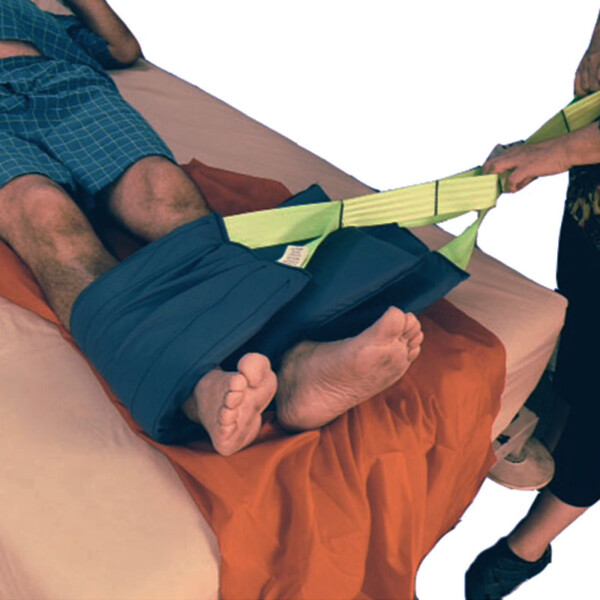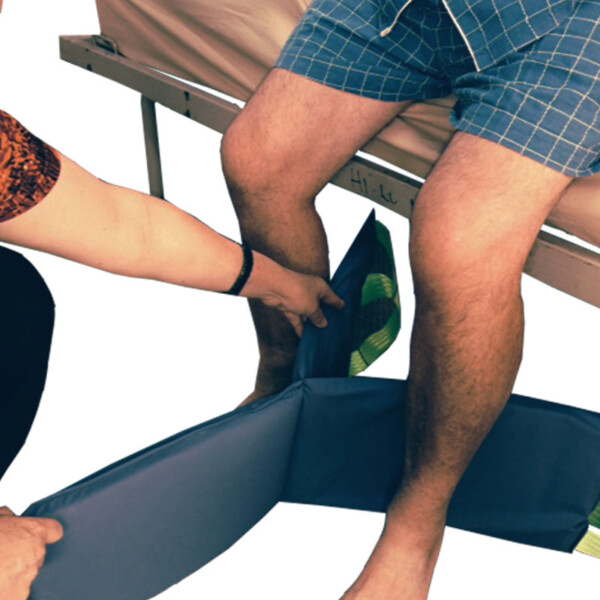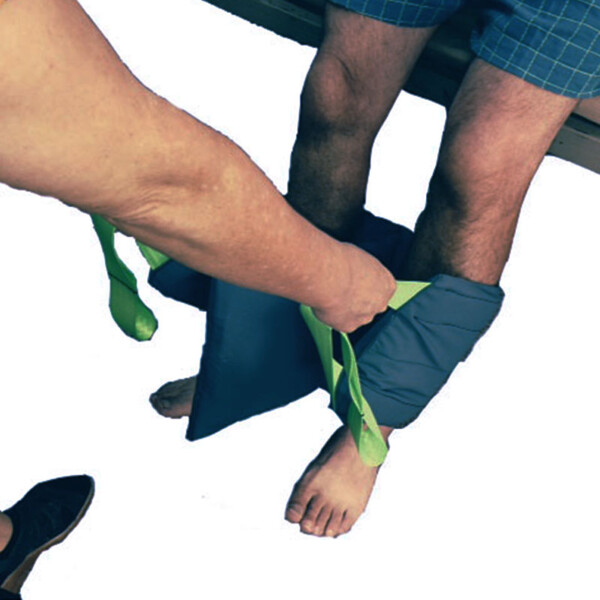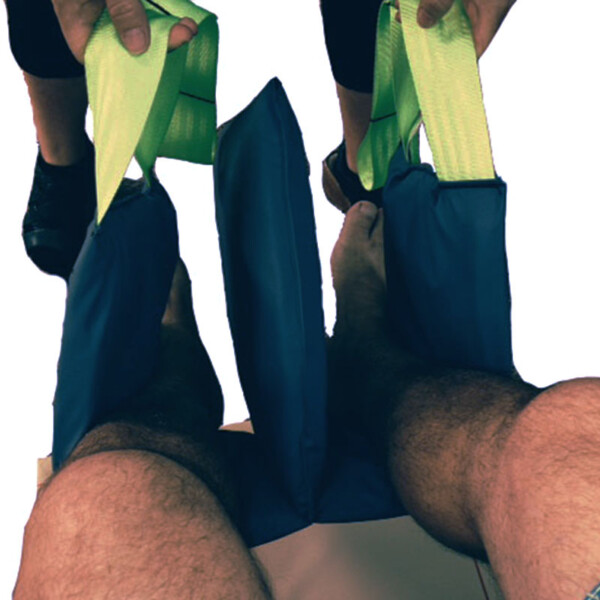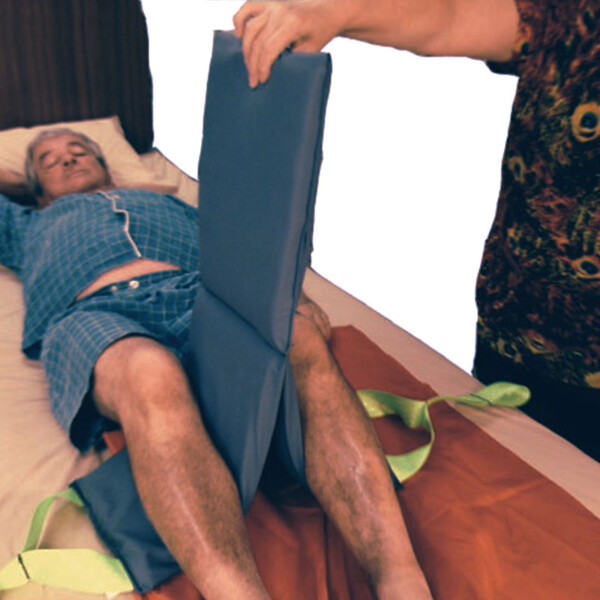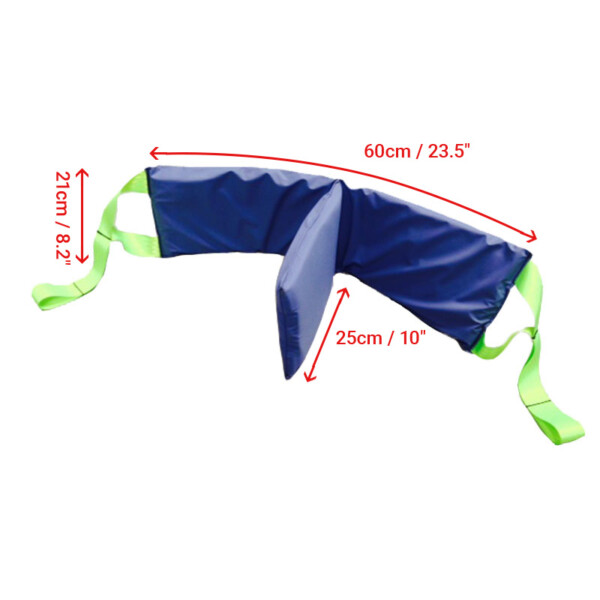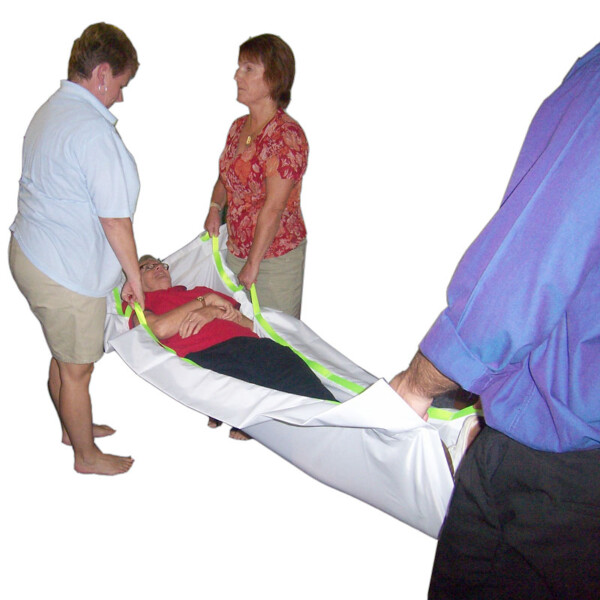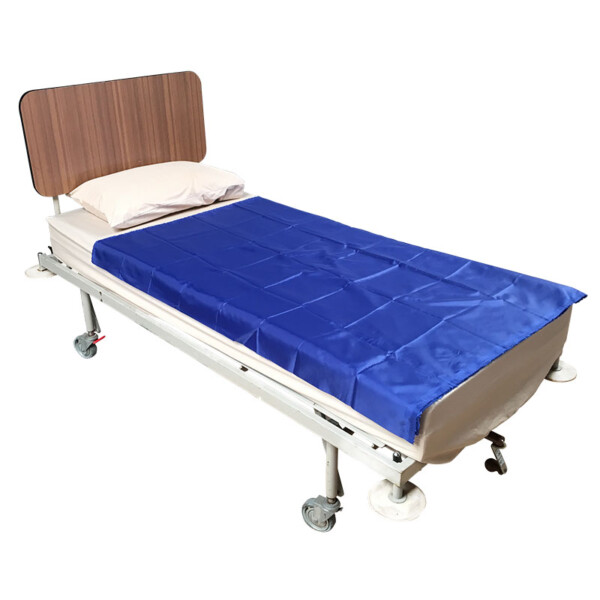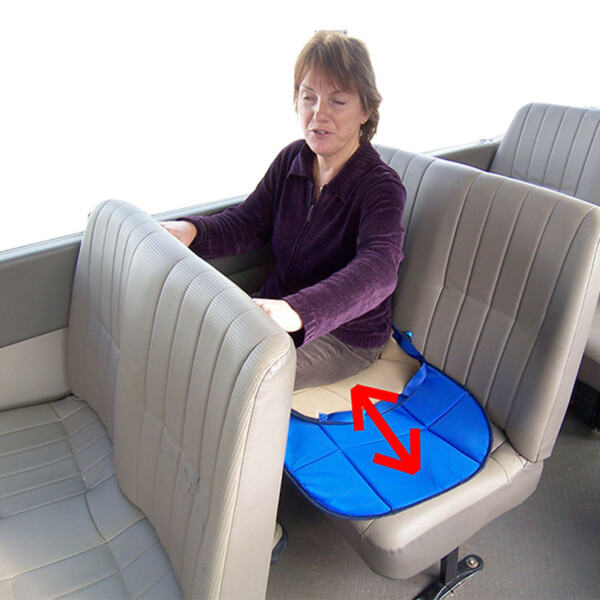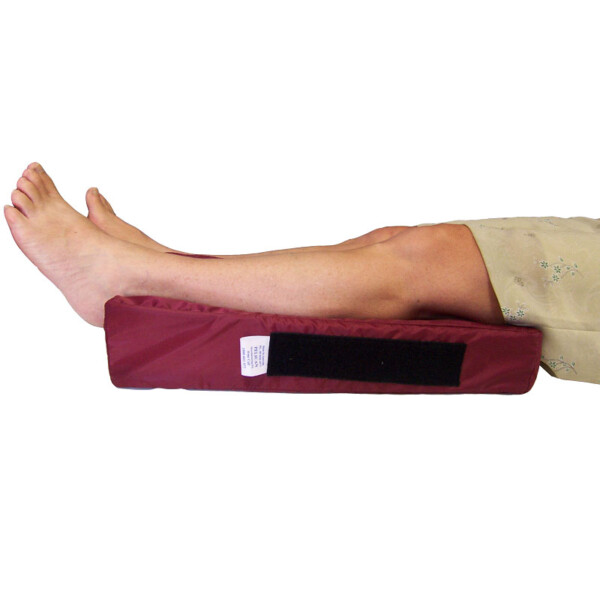Description
The Leg Lifter – Bariatric/Oedema is made with a soft, wipeable, medical grade material with special foam padding. There is a central raised padded section that protects the legs from touching when lifting or lowering. The Carers can lift the Patient’s legs by hand or use a hoist.
This product may help some bariatric people or people with oedema who have problems getting their legs onto a bed.
Lower the bed so when the Patient sits down, they will be able to place their bottom as near to the middle of the bed as possible. Show the Patient where they should sit, so when they are lying down, their head will be on the pillow. If the bed does not lower, as an ensemble bed has a fixed height, then the Patient may be able to stand on a block to make them taller, so their bottom will go back further on the mattress. Pelican make different sizes of Bed Steps. The height of the steps needed will depend on the height of the Patient or the bed. The steps are big enough for the Patient to stand on and turn around though some people may need assistance. The Patient should sit safely on the side of the bed before lifting their feet. Ensure they will not slip off.
To Use
Place the Leg Lifter behind the Patient’s ankles and lower calves, with the central section between the legs. If lifting by hand hold the lowest loops, one in each hand, so the legs are not squashed together when lifting. Start to lift by taking the feet away from the side of the bed a little, so the Leg Lifter does not simply ride up under the knees. Then lift the legs high enough to clear the mattress and walk around to the end of the bed and gently place the legs on the bed. If a folded Bed Slide Sheet is placed at the foot end of the bed, it may be possible to slide the feet to the middle of the bed, to reduce the amount of lifting. Always have at least two people lifting heavy legs. The Carers should hold one side each of the lifter so the Patient’s legs are not being squashed together.
If using a hoist to lift, fit the Leg Lifter webbing to the Spreader Bar. If the hoist does not lower enough, then use the longer loops. When starting to lift the legs, move the hoist away from the side of the bed a little, so the Leg Lifter does not ride up under the knees. Once the legs are high enough to clear the mattress then move the hoist so the Patient’s legs will be on the bed. Practise with the hoist before lifting the legs, to make sure the hoist will fit around the bed legs. Remove the Leg Lifter carefully. If the Patient can bend and open their knees, remove from between the legs. It is easier to turn the Patient if a Pelican Bed Slide Sheet is tucked under the Patient’s buttock and upper thigh that is nearest to the foot end of the bed. An alternative is to use the Handi Soft Turn Pads.
Head over to this page for more Bariatric products.
Some other products to consider
 |
Leg Lifter | A self-help product to help Patients to lift their leg on to or off a bed. |
 |
Leg Lifter for Two Feet | A self-help product to help Patients to lift their legs on to or off a bed. |
 |
Knee Lifter | For Patients who may have trouble getting their legs in/out of a car or bed. |
Technical:
Item # 233
Safe Working Load (SWL): 450kg / 990lbs
Assess the weight of the patient’s legs. If a patient’s legs are large or oedematous, using a lift machine is recommended as the safest option. Manual lifting of a patient’s legs using 1 or 2 Carers should be risk-assessed for every client to ensure the weight lifted is realistic and safe.
Cleaning:
Wash up to 80°C (176°F). Air or tumble dry on a cool setting, ensuring the drum is cool. Ensure the product is dry before using or storing.

